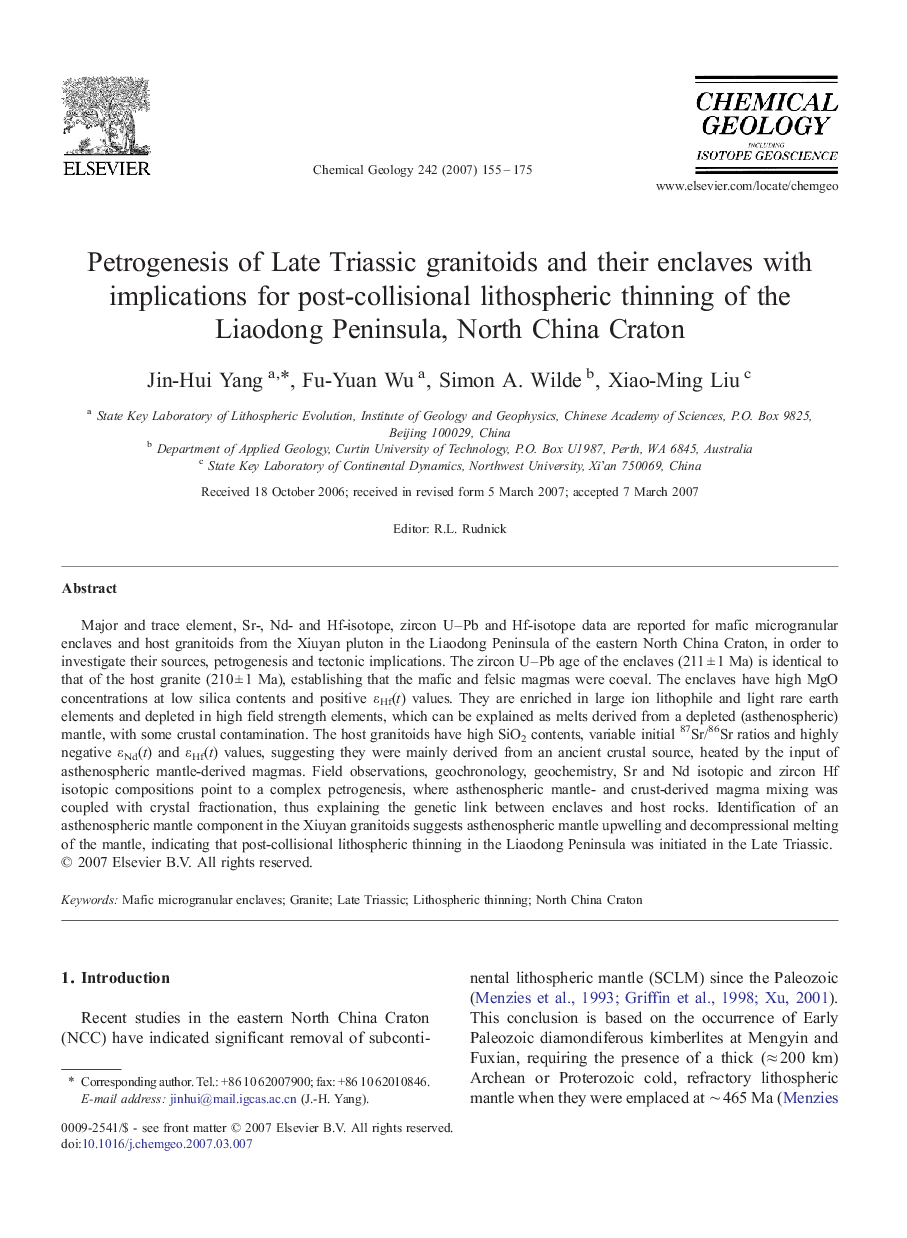| Article ID | Journal | Published Year | Pages | File Type |
|---|---|---|---|---|
| 4701183 | Chemical Geology | 2007 | 21 Pages |
Major and trace element, Sr-, Nd- and Hf-isotope, zircon U–Pb and Hf-isotope data are reported for mafic microgranular enclaves and host granitoids from the Xiuyan pluton in the Liaodong Peninsula of the eastern North China Craton, in order to investigate their sources, petrogenesis and tectonic implications. The zircon U–Pb age of the enclaves (211 ± 1 Ma) is identical to that of the host granite (210 ± 1 Ma), establishing that the mafic and felsic magmas were coeval. The enclaves have high MgO concentrations at low silica contents and positive εHf(t) values. They are enriched in large ion lithophile and light rare earth elements and depleted in high field strength elements, which can be explained as melts derived from a depleted (asthenospheric) mantle, with some crustal contamination. The host granitoids have high SiO2 contents, variable initial 87Sr/86Sr ratios and highly negative εNd(t) and εHf(t) values, suggesting they were mainly derived from an ancient crustal source, heated by the input of asthenospheric mantle-derived magmas. Field observations, geochronology, geochemistry, Sr and Nd isotopic and zircon Hf isotopic compositions point to a complex petrogenesis, where asthenospheric mantle- and crust-derived magma mixing was coupled with crystal fractionation, thus explaining the genetic link between enclaves and host rocks. Identification of an asthenospheric mantle component in the Xiuyan granitoids suggests asthenospheric mantle upwelling and decompressional melting of the mantle, indicating that post-collisional lithospheric thinning in the Liaodong Peninsula was initiated in the Late Triassic.
